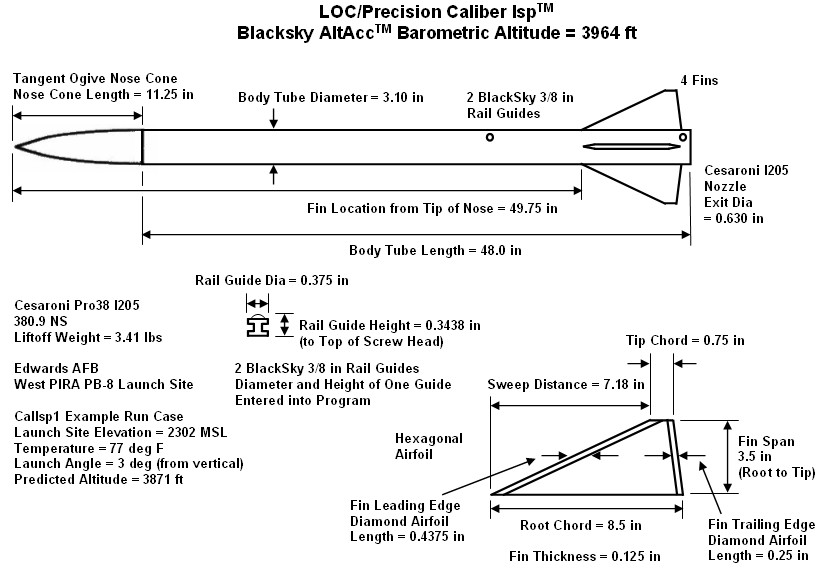
Presented below is a RASAero software example run for a LOC/Precision Caliber IspTM high power rocket, powered by an I205 rocket motor, which was flown with a Blacksky AltAcc axial accelerometer and barometric altimeter instrumentation unit, to an altitude measured by the barometric altimeter of 3964 ft. The RASAero rocket file for this rocket (CalIsp1.alx1) is included in the RASAero software download.

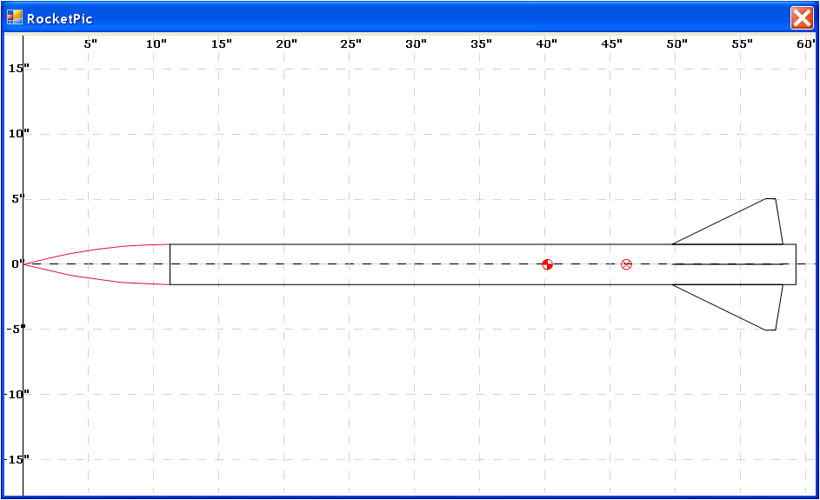
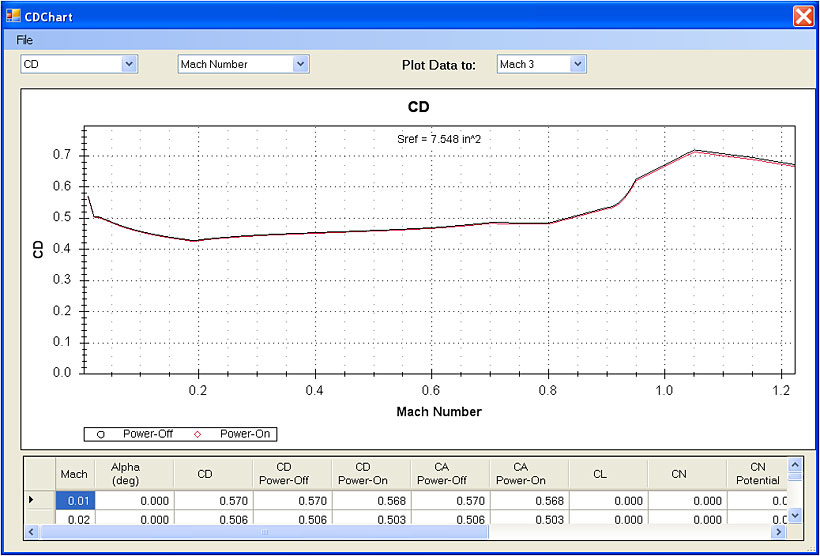
Note that because of the small nozzle exit diameter (nozzle exit area), there is little difference between the power-on and power-off drag coefficients. The primary start of the transonic drag rise at approximately Mach 0.90 can be seen in the plot, although the drag begins to increase at Mach 0.80 due to the transonic drag rise for the rail guides (which are equivalent to vertical cylinders in the flow around the rocket).
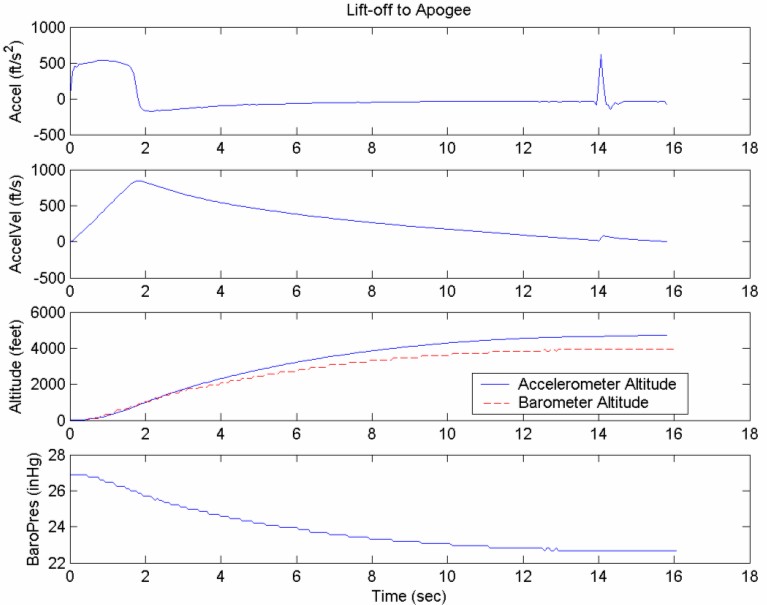
Data from Blacksky AltAcc axial accelerometer and barometric altimeter on-board instrumentation unit.
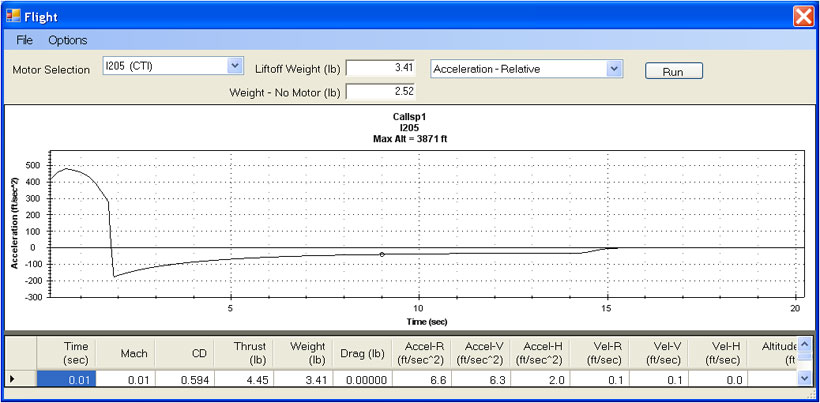
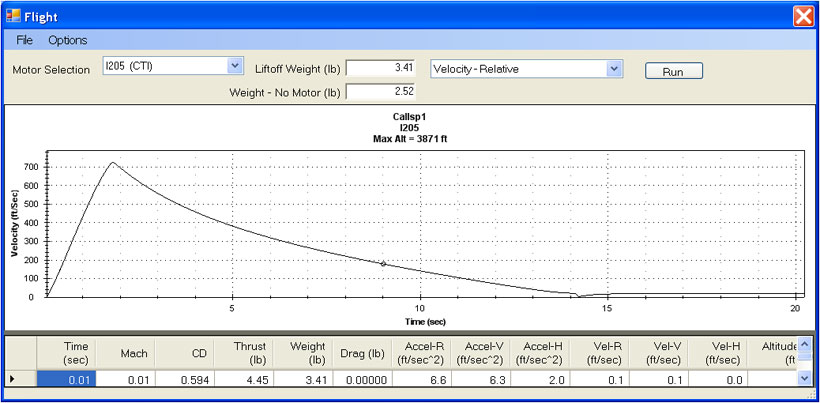
Compare predictions to accelerometer-based flight data from Blacksky AltAcc on-board instrumentation unit presented in previous plots.
In the early part of the flight the accelerometer-based altitude and velocity are considered more accurate than the barometric altimeter altitude due to the absence of any pitot tube corrections or pressure lag corrections to the on-board measured barometric pressure. At apogee the barometric altimeter altitude is considered more accurate than the accelerometer-based altitude, due to trajectory and attitude effects not taken into account in the one-dimensional integration (assuming a straight-up flight) of the body axial acceleration data. For the RASAero flight simulation predicted axial acceleration note the similarly shaped plot of acceleration versus time compared to the on-board measured axial acceleration, with a peak axial acceleration of approximately 500 ft/sec2. For the RASAero flight simulation predicted velocity note the similarly shaped plot of velocity versus time compared to the accelerometer-based velocity, with a peak velocity of just over 700 ft/sec.
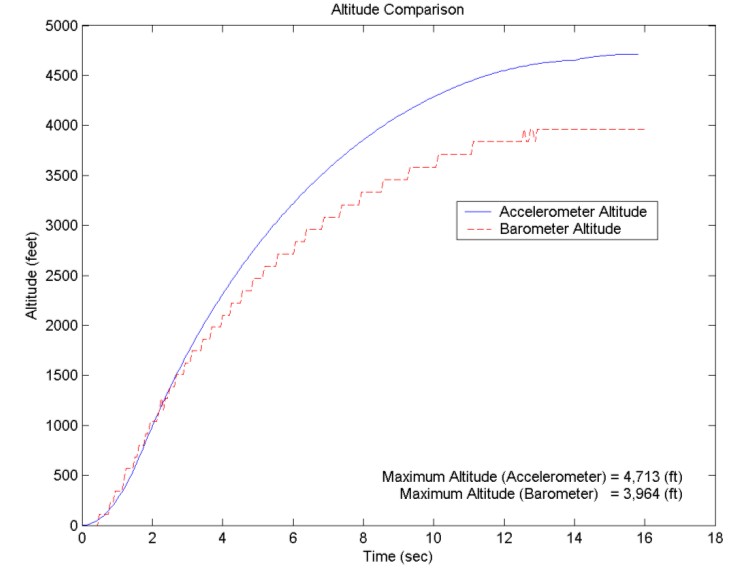
Data from Blacksky AltAcc axial accelerometer and barometric altimeter on-board instrumentation unit.
In early part of flight accelerometer-based altitude is considered more accurate. At apogee barometric altimeter altitude is considered more accurate.
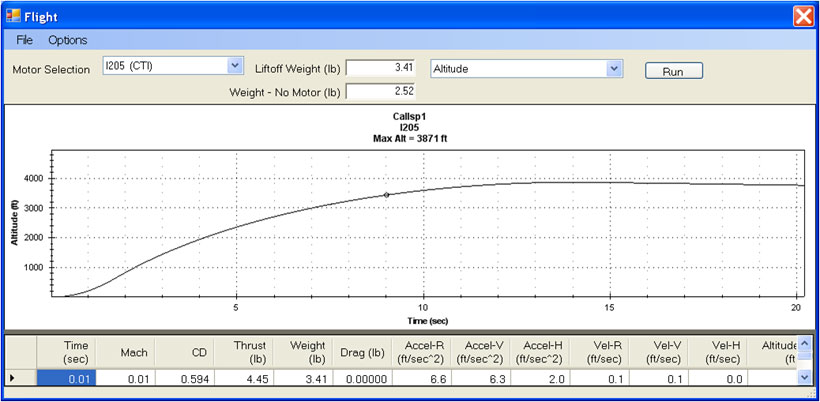
Compare prediction to accelerometer-based altitude data for early phase of flight and barometric altimeter apogee altitude data from Blacksky AltAcc on-board instrumentation unit presented in previous plot.
Again, at apogee the barometric altimeter altitude is considered to be more accurate than the accelerometer-based altitude. Again note the similarly shaped plot of altitude versus time from liftoff through apogee. For the LOC/Precision Caliber IspTM rocket on an I205 motor the RASAero flight simulation predicted altitude is 3871 ft, an error of only -2.35% compared to the barometric altimeter measured altitude of 3964 ft.

Data from Blacksky AltAcc on-board instrumentation unit.
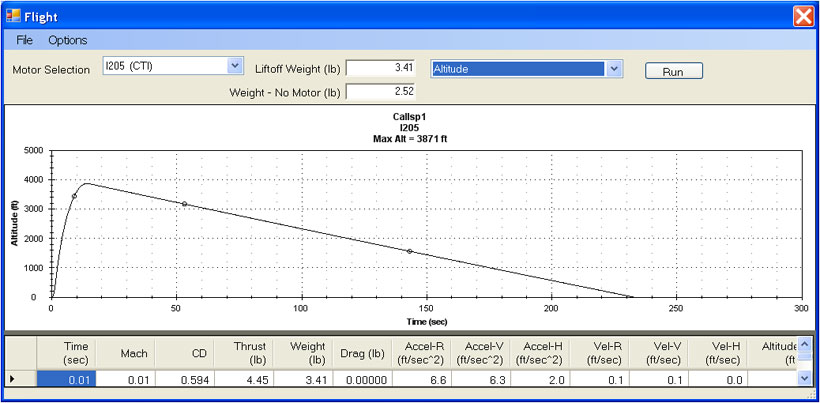
Compare prediction to barometric altimeter altitude data, including parachute descent, from Blacksky AltAcc on-board instrumentation unit presented in previous plot.
For the RASAero flight simulation prediction note the similarly shaped plot of altitude versus time for the parachute descent. Based on the barometric altimeter altitude data from apogee to landing the parachute descent time was 241 sec. The RASAero flight simulation predicted parachute descent time is 218.83 sec, an error of only -9.20% in the parachute descent time from apogee to landing.
Summarizing the flight; for the LOC/Precision Caliber IspTM rocket on an I205 motor the RASAero flight simulation predicted altitude is 3871 ft, an error of only -2.35% compared to the barometric altimeter measured altitude of 3964 ft.